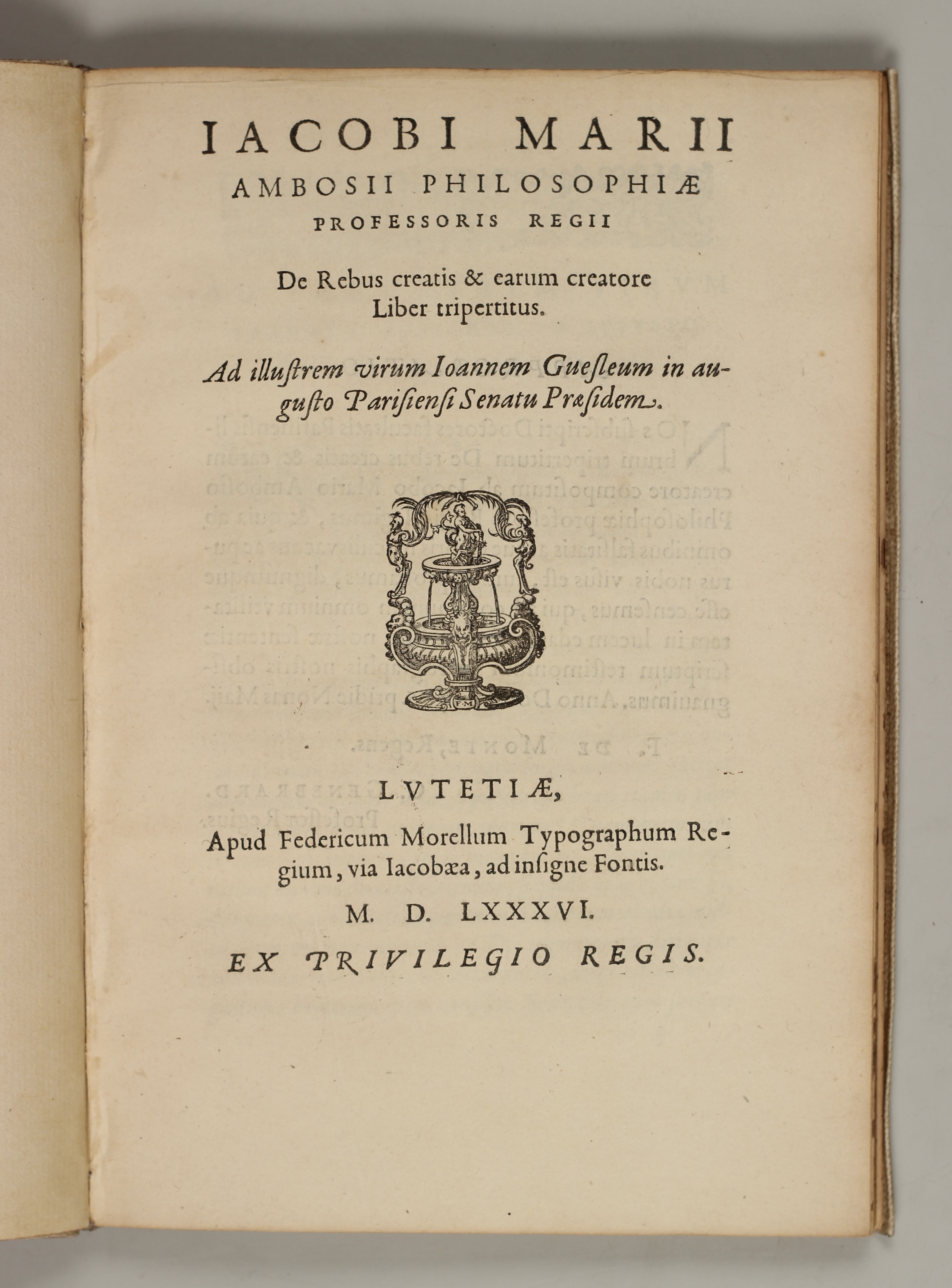Amboise, Jacques-Marie, d'
De rebus creatis … — Paris 1586
2.200 €De rebus creatis & earum creatore liber tripertitus […]. – Parisiis, apud Federicum Morellum …, M. D. LXXXVI
[Paris, F. Morel, 1586]
First edition
4to (234 x 157 mm). A4 B2 A-O4 P2: (6) ff., 115 pp. Recent limp vellum. Rare. – Adams A-928; ustc 170812.
¶ Amboise was professor of Greek and Latin philosophy at the Collège de France, and professor of rhetoric and philosophy. Published on Logics and Rhetorics, and a number of orations.
The Praefatio is dedicated to the politician Jacques La Guesle (1557-1612), followed by a poem on Amboise in Greek by Nicolaus Gulonius (Nicolas Goulu, 1530-1601) and its Latin translation, and a Hexastichon by the publisher and professor at the Collège de France Federic Morel.
The first part of the book is entitled De Sphaera mundi. After two short chapters De Elementari regione, he quickly moves on to the more important celestial region, in qua nihil est mortale, and which is the Dei immortalis domicilium.
The following is dedicated to the eight planets, their similarities and differences. Of the spheres Meridianus, Aequinoctialis, Zodiacus etc. each has its own chapter. Those who wish to know more about the celestial spheres d’Amboise refers to scholars who possunt plus vobis in hoc genere. De sphaera mundi introduces the world of the unchanging, but only under the conditions of sensual perception and not of reason. The knowledge of the eternal by reason is the subject of the second part of the book: De deo. After a short reminder of antique polytheism d’Amboise deals with the five reasons for the necessity of the existence of God. The second part ends with a large chapter entitled Quid sit Deus. Following ps.-Dionysius he writes that for the knowledge of God non affirmationes, sed negationes accomodatae sunt.
The third and last part of De rebus creatis is on (platonic) ideas. After a short etymylogical chapter about the word idea he moves on to the question if there are ideas and what they are, followed by a chapter on the number of ideae. The last chapter is in great parts dedicated to the question Quid enim est malum? Malum is understood here as destruction in the broadest sense. It originates from privatio, i. e. it has no independent existence (Plotin, Augustinus).





